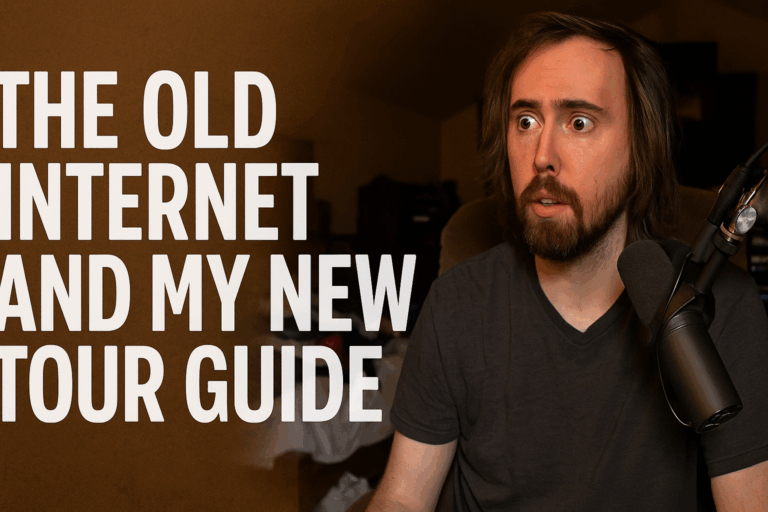
It’s time to stop pretending. Nothing But Trouble—the 1991 fever dream of a movie starring Dan Aykroyd, Chevy Chase, John Candy, and a prosthetic nose that haunts my nightmares—was not just a bizarre misfire. It was a cultural event. And not just any cultural event. I am here to make the claim, with my whole chest, that Nothing But Trouble was the true turning point for hip-hop.
Yes, you read that right.
Forget The Message. Forget Straight Outta Compton. Forget even Illmatic. The moment that set hip-hop on its course to becoming the dominant cultural force of the 21st century happened when Digital Underground rolled into Valkenvania and introduced Tupac Shakur to the power of insanity.
The Scene That Changed It All
For those who have mercifully scrubbed Nothing But Trouble from their memories, let me remind you: The movie is a surrealist horror-comedy about a group of yuppies getting trapped in a town run by a grotesque, 106-year-old judge (Aykroyd), who runs a Kangaroo Court in a mansion filled with mutant babies and literal rollercoaster executions. Chevy Chase smirks through it. John Candy plays two characters. Demi Moore is there. And in the middle of all this madness, for no discernible reason, Digital Underground shows up.
Yes, that Digital Underground. The same group that brought us “The Humpty Dance.” The scene goes like this: Judge Valkenheiser is about to sentence the group to death, but stops when he finds out they’re musicians. Instead of, you know, running for their lives, Digital Underground decides to put on a full-blown performance of Same Song right there in the courtroom. It is, without exaggeration, the most normal thing that happens in the movie.
And there, right in the background, is a young Tupac Shakur.
Tupac’s Awakening
At this point, Tupac was still just a backup dancer and occasional rapper for Digital Underground. But being in Nothing But Trouble did something to him. It exposed him to a new reality: a world where you could go absolutely, certifiably nuts, and people would still take you seriously.
Look at the evidence: Before Nothing But Trouble, Tupac was a promising, socially conscious rapper coming up in a goofy party-rap crew. After Nothing But Trouble, he fully transforms into a mythological figure. He starts rocking the bandana tied in the front. He goes from being a fun-loving background player to an icon of rebellion and contradiction—deeply introspective and philosophical one moment, completely unhinged and larger-than-life the next. Nothing But Trouble showed him the blueprint.
The Nothing But Trouble Effect on Hip-Hop
You might be thinking: “Dan, you’re reaching.” But am I? Am I really?
Consider this: What happened after Nothing But Trouble?
- Hip-hop embraced larger-than-life personas like never before. Tupac’s evolution into a character (Thug Life, Makaveli) laid the groundwork for what rap would become.
- The genre went cinematic—albums became stories, feuds became movie-worthy dramas, and rappers became full-fledged mythic figures.
- We started getting rap beefs with storylines. Biggie vs. Tupac played out like wrestling. Jay-Z and Nas had diss tracks that felt like mafia movie rivalries.
- Outrageous personas became the norm. Tupac saw Dan Aykroyd play an old man with a phallic nose and thought, I can take this energy and change music forever. Would we have had Ol’ Dirty Bastard, Busta Rhymes, or even Kanye’s “I am a God” phase without Tupac seeing that pure, unhinged lunacy could be a tool?
I’m saying: Hip-hop saw Nothing But Trouble, processed it, and decided, we are going to go nuts too.
Conclusion: The Legacy of a Trainwreck
Was Nothing But Trouble a critical success? Absolutely not.
But was it important? More than we ever realized. Because in that insane little courtroom, hip-hop saw its future: a world where absurdity, theatrics, and larger-than-life personas weren’t just possible—they were powerful.
So next time you think about where hip-hop turned the corner into full spectacle mode, don’t look to The Source Awards. Don’t look to Death Row and Bad Boy. Look to a movie where Dan Aykroyd played a mutant judge, Digital Underground saved lives through music, and a young Tupac Shakur quietly realized that the world was his stage.
In other words: Nothing But Trouble didn’t just predict the future of hip-hop.
It created it.


